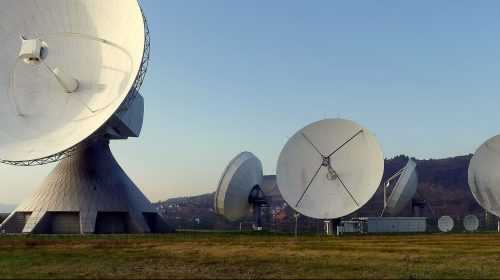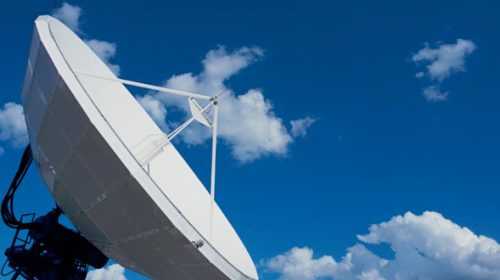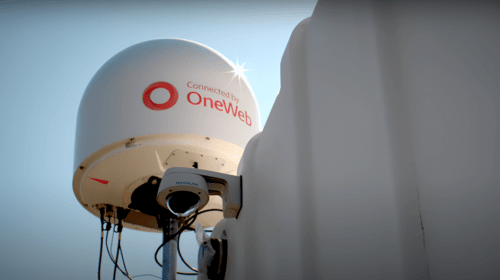What Does Affordable Backhaul Bring to this Model?
Jul 28, 2023
The satellite industry is undergoing a massive change, as new LEO constellations offer better pricing, higher speeds, and lower latency than traditional GEO services. While pricing for GEO satellite services has declined considerably over the last couple decades, it remains out of reach for many consumers. Starlink offers consumer-class services to this market and has made broadband satellite more affordable for consumers and many small businesses, but the pricing remains out of reach for many underserved people throughout the world. Starlink is not designed as an enterprise class service with SLAs and unlimited bandwidth, so it is not a solution for WISPs (Wireless Internet Service Providers). Given the new enterprise class LEO services from OneWeb, with higher data rates, and better pricing, perhaps it makes sense to revisit the WISP model. The technology for this business is mature and reliable, however the cost of connecting remote WISP networks to the internet backbone has limited the deployment of these networks into remote communities. That may be changing.
We first talked about WISPs in 2017 with So You Want to be a WISP and we’ll start by reviewing a little of the same material. To build out a WISP requires three primary components:
The Local Network
Subscribers will need a way to connect to your network. There are two basic options:
1. Set up WiFi Hot Spots. This is the simplest. Select one or more locations within a town or village where subscribers can come and connect to the network, either with their own mobile devices such as smartphones and tablets, or in Cyber Cafes with workstations provided by the WISP, or perhaps by a school, church, or other local organization. Subscribers go to the location, sign on, and are billed by time, data usage or flat fee. A WiFi Hot Spot will generally cover an area up to about 500m, depending on foliage, buildings, etc. in the area. Multiple Hot Spots can be deployed, usually interconnected with point-to-point wireless links, but it can also be fiber or copper. As the point-to-point wireless links require line-of-sight, it may require towers to get above trees, buildings, or anything else in the way.
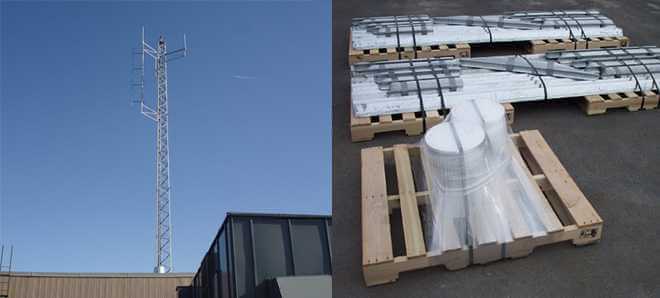
2. Fixed Wireless distribution. This approach brings the internet right into the subscriber’s home or place of business. It generally requires one or more towers that will have wireless links to the subscriber’s location. With PTMP or Point to Multi-Point wireless radios, distances up to several kilometers can be supported, if there is a clear line-of-sight. A central location where the VSAT providing backhaul is installed can link to multiple towers, extending coverage. Each tower distributes the bandwidth to the client’s location using a CPE (Customer Premise Equipment) device that delivers Ethernet, WiFi or both to the residence or business. Hybrid networks can be designed with fixed wireless links to individual subscribers, and to Hot Spots at convenient gathering locations.
The Backhaul
We discussed the local network, also referred to as the “last mile,” now we must get the subscriber traffic to the internet. This has been where the WISP model became difficult, given the costs of GEO dedicated bandwidth. First, we need to figure out how much bandwidth is needed. This is highly subjective and depends on what subscribers want, and what they can afford. Because of the high costs of GEO bandwidth, this generally meant a service too expensive for the subscriber, or a service that was of low quality and couldn’t attract enough subscribers to justify it. That might be changing.
A simple formula may be used as a starting point to estimate how much bandwidth is needed for backhaul. We start with the desired service quality. It’s easiest to put it in terms of standard cellular bandwidth services.
3G services generally support about 512 kbps of download. For remote locations where subscribers have little or no prior access to the internet, this may be acceptable, at least as a starting point. This kind of service level is not going to support a lot of video traffic, or it will get congested. The WISP will need to use bandwidth management to prevent or limit traffic that would use up all the capacity, and slowing the service for subscribers.
4G services range from 1 Mbps to 12 Mbps. The author lives in semi-rural country in Virginia and gets about a 4G-1 Mbps to 2 Mbps service quality, which is much less than what is available in larger towns and cities but it is still quite good. This is a typical service level for WISPs, and it supports everything including video conferencing and YouTube videos in SD (Standard Definition) with good HD (High Definition), but not 4k resolution.
5G services are generally 15 Mbps or more. Most rural WISPs aren’t running with this kind of bandwidth, which is needed for high-resolution video such as 4k.
The second factor is the sharing ratio. A WISP is going to obtain dedicated, unlimited bandwidth and share it among the subscribers leveraging the fact that all devices aren’t sending and receiving at the same time. Internet traffic is intermittent. Most of it is short requests, followed by a download of content. There is a lot of idle time between these actions, so that many users can share the same bandwidth. Obviously, the fewer subscribers that are sharing it, the better the quality. These numbers are subjective, but in general, they provide a good working estimate.
Residential services are generally shared at anywhere from 20:1 to 50:1. We tend to start with the more conservative 20:1 ratio, but this can be increased to reduce costs to the subscriber. SOHOs or small office/home office networks are shared at about 15:1, a good level for resorts, hotels, and other places where there may be some work traffic, as well as personal traffic. Enterprise sharing is usually 10:1, and this ratio is common throughout the industry. Sites that have a lot of video traffic should look at 4:1 sharing.
Let’s look at an example. We are setting up a WISP in a rural village supporting about 150 subscribers. We are going to provide a 4G-1Mbps service level to residential subscribers and share it at 20:1. We multiply 150 subscribers x 1024 kbps (1 Mbps) and divide by 20:1 sharing. This gives us a download of 7.68 Mbps. We then divide by 5 to get an upload of 1.5 Mbps. We would then look for the best pricing we can get on a satellite providing that much bandwidth to the location. In this example, assuming a WISP in Latin America, and without going into specific pricing, we find that the BusinessCom OneWeb service can deliver much more bandwidth for about half the cost of a GEO dedicated circuit. Reduced backhaul costs may make WISP networks more feasible for remote communities, resorts, campgrounds, etc.
Running this formula with 500 subscribers, we find that we can deliver more CIR (dedicated bandwidth) for a lower cost, and include a great deal of additional shared bandwidth, using BusinessCom OneWeb at significant savings over traditional dedicated GEO circuits. The WISP model suddenly looks more attractive than it has been.
Starlink has a data quota and is not designed for large networks. A WISP cannot afford to run out of bandwidth before the next billing cycle. The BusinessCom OneWeb service is unlimited with no data quotas. What is needed are the enterprise features of GEO circuits, with the lower costs, higher bandwidth, and the lower latency of LEO. Where GEO backhaul did not support interactive gaming because of the high latency, BusinessCom OneWeb is going to support those games. The reduced latency will make VPNs such as IPSec work without additional work-around solutions. Voice and video traffic will not see the delay found in GEO communications. Not only is the service less expensive, but it offers a better experience for the subscriber.
A successful WISP needs an unlimited backhaul supported by an SLA (Service Level Agreement) and a host of other enterprise class features, which are described in more detail here: BusinessCom Launches OneWeb Services
The OSS/BSS Platform
The WISP will need to figure out how to bill subscribers. They can offer unlimited plans, which often makes more sense for businesses willing to pay a higher rate without the limitation of a data quota. For the basic residential subscriber, a usage-based plan is likely to be more affordable. For Hot Spots, a time-based plan is often the simplest, with the subscriber purchasing a couple hours of browsing time.
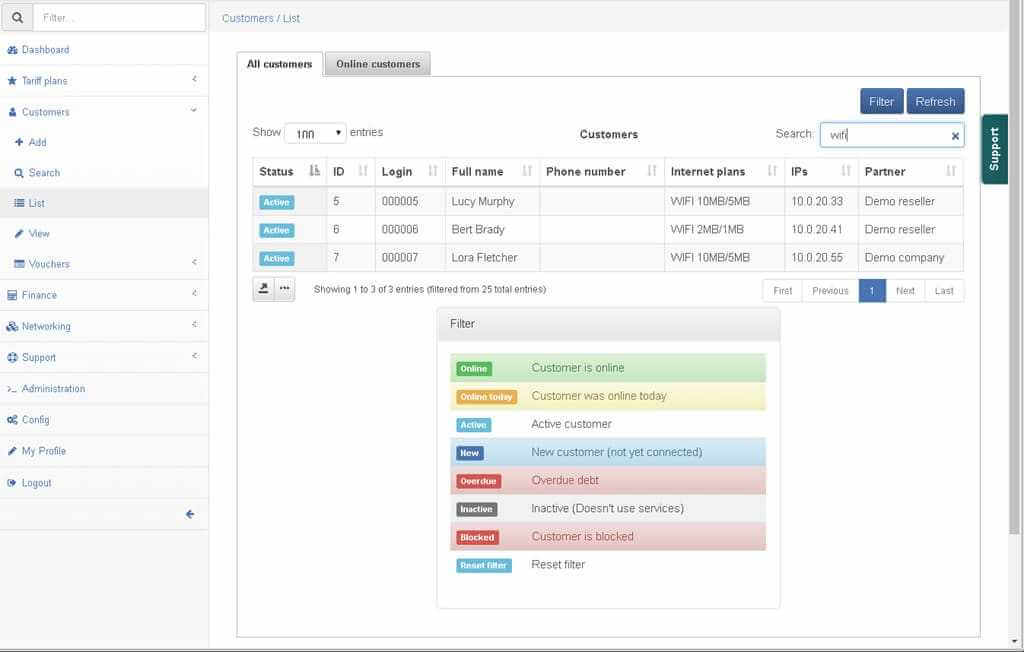
The average web page today is probably pushing 4 Mbps per page, and a typical subscriber may hit 50 pages per day. This comes to 200 MB of traffic per day, or about 6 GB per month. Thus, data quota options might range from 3 GB per month to perhaps 25 GB per month, with options to buy more capacity or have throughput throttled until the next billing system.
Regardless of how the WISP elects to bill subscribers, it must be managed. This is where an OSS/BSS (Office Support Services/Business Support System) comes into play. While small networks can be managed with a spreadsheet, this quickly gets out of hand as the subscriber base grows. The OSS/BSS will handle everything from tracking inquiries, to activations, to billing, to managing data quotas, tracking trouble calls, managing upgrades, downgrades, or disconnections, and much more. It might also provide subscribers with information about their own throughput and types of traffic. BusinessCom Networks has a great deal of experience with these systems, having implemented the BusinessCom portal to do these tasks some time ago. BusinessCom can provide advice and direction for applications to make this job simpler and more reliable rather than trying to use spreadsheets.
How to get Started
First you need an understanding of the project. What are the geographic features that will determine how you distribute the bandwidth? Is wireless even an option? If not, can the village be wired? This research will aid in selecting the best vendors to provide the wireless distribution hardware. BusinessCom recommends enterprise class wireless companies such as Ubiquiti and Mikrotik. Next, is determining how much backhaul bandwidth you need, depending on the number of potential subscribers and the service quality you want to provide. This provides the baseline pricing to which you add the infrastructure, operations, and profit margin. Dividing this by the number of subscribers provides a per/user price for unlimited services, but a data quota billing system will generally support more subscribers, reducing the overall per/subscriber price.
Unfortunately, the backhaul costs for traditional GEO circuits puts a damper on many WISP projects, as it becomes difficult to offer a decent service at an affordable price to subscribers, whether it be a remote community with a 3G service or an island resort with businesspeople expecting high bandwidth. With reduced backhaul costs, it is worth looking at the viability of WISP projects again. Please click Contact Us/Request More Information, and tell us about your project, and we will help examine the viability and provide guidance.



